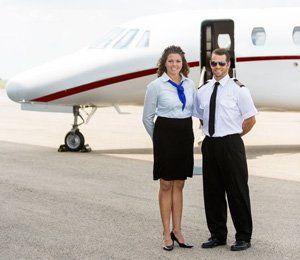
What is HIMS?
The Human Intervention Motivation Study (HIMS) is an alcohol and drug assistance program that was developed specifically for commercial airline pilots in 1974. This program not only helps identify those individuals who suffer from chemical dependency, but it also assists in the treatment of their disease. Included in this program is an effort to help in the re-certification of these pilots, so that they can return to gainful employment.
The program is designed to aid in peer identification and intervention of those individuals with substance abuse problems. Prior to this program, pilots were driven underground, because the diagnosis of a chemical dependency lead to medical disqualification. With this program the aim is to educate, identify, and refer for professional evaluation, treat, rehabilitate, and regain FAA certification. The HIMS program emphasize treatment, not punishment.
This program could not function were it not for the coordination between the FAA, air carriers, and pilot representatives. Almost every major carrier has a HIMS program in place. Education is the key to having a successful HIMS program.
It's better to come forward voluntarily than to get caught
If you suffer from a substance abuse issue come forward to your command instead of continuing and running the risks of getting caught.
When you come forward you give everyone involved an opportunity to help you instead of getting caught and losing your pilot license.
What happens after being identified with a substance abuse problem?
1. In patient Treatment:
a. This consists of admission to a treatment facility for 28 to 30 days and in some cases 60 to 90 days
b. Detoxification takes place
c. The addiction is evaluated and treated
2. Outpatient Treatment:
a. Within a week of discharge from the inpatient treatment facility meet with a HIMS trained independent medical sponsor (IMS), also known as the aviation medical examiner (AME)
b. Establish peer and company sponsorship
i. Establish a time and place for meetings
c. Start an intensive outpatient program (IOP)
i. Attend ninety meetings in ninety days (90/90) at alcoholics anonymous/narcotics anonymous
ii. Maintain a copy of attendance for the AA/NA meetings and supply a copy for the AME
iii. Attend outpatient group therapy a minimum of once a week, preferably two to three times a week
iv. Meet with AME once a month
3. Establish Random Alcohol/Drug Testing:
a. This can be done with the assistance of either the pilot’s company sponsors or the AME
b. The random testing is usually done once or twice a week
4. Outpatient Reports:
a. Have the director of the outpatient group therapy send the AME a report on the patient’s progress at least once a month
b. Have the peer sponsor send the AME a monthly report on the pilot’s status
c. Have the airline monitor (chief pilot) send the AME a monthly report on the pilot’s status
5. Psychologist/Psychiatrist Evaluations:
a. Once the 90/90 program has been completed the patient will then be evaluated by a HIMS approved psychologist for neuropsychological testing
b. After the testing is complete the pilot will then be evaluated by a HIMS approved psychiatrist
c. The testing and the appointments necessary to complete this step are arranged by the AME
6. Flight Physical:
a. When the psychologists and psychiatrist evaluations are completed and reviewed by the AME the pilot will then have an airman physical examination
b. The physical examination is marked as deferred and the AME prepares a package of all the available information, which is then sent to the FAA
7. Package Contents:
a. The package includes the following information:
i. Hospital records from inpatient care
ii. Copies of reports from the outpatient group therapy facilitator
iii. Copies of the reports from the airline sponsor and monitor
iv. Copies of the psychological testing
v. Copy of the psychiatrist evaluation
vi. Evaluation of the pilot from the AME to include the pilot’s history and recovery status

